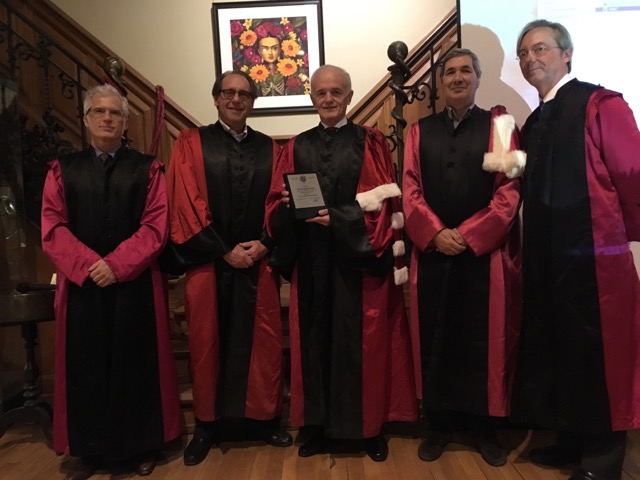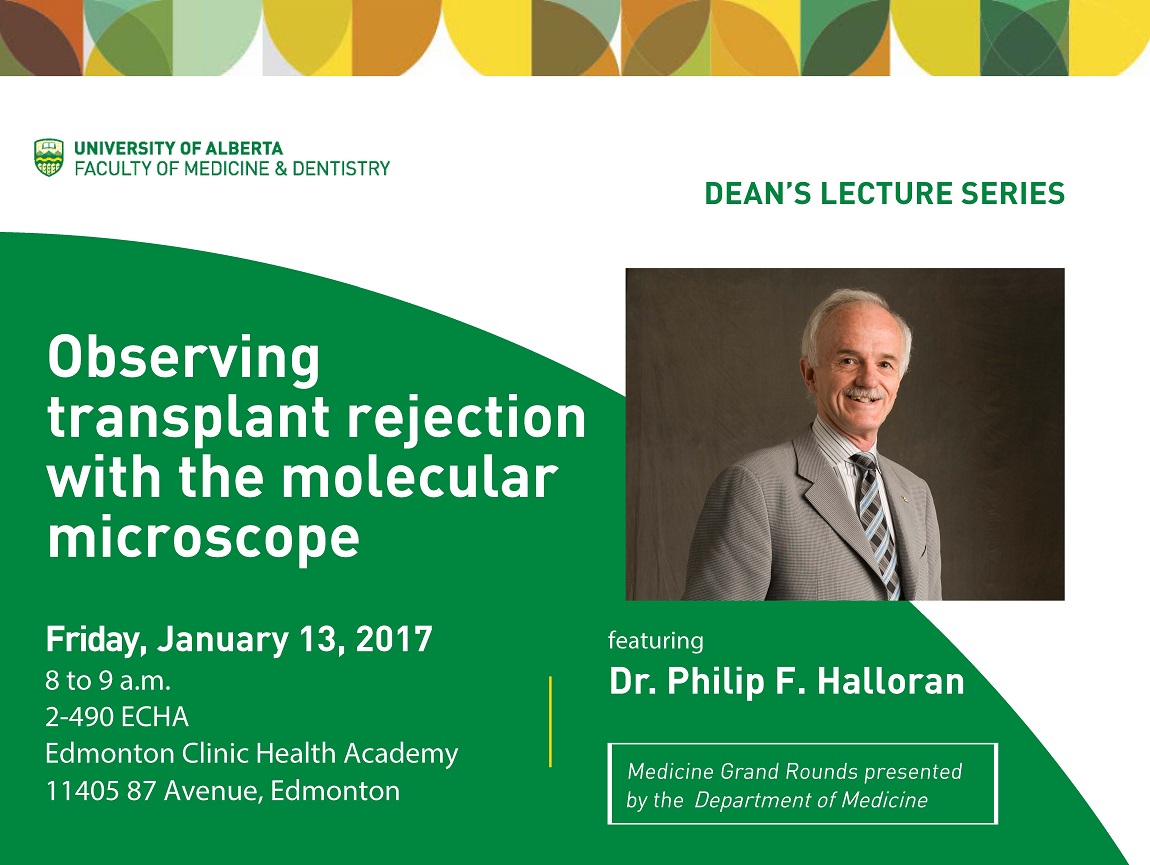
Philip Halloran (centre) was bestowed with a Doctor Honoris Causa from Paris Descartes University in the historic Musee d'Histoire de Medicine.
Swiftly after winning the prestigious 2016 Prix Galien in Research, transplant pioneer Philip Halloran was bestowed with a Doctor Honoris Causa from Paris Descartes University at a ceremony on December 14, 2016 in the Musée d'Histoire de Médicine.
Most of the pivotal innovations facilitating kidney transplant have been made in France. To be paid hommage by transplant peers in Paris is to be counted as among the world's giants of discovery science.
University of Alberta's Transplant Milestones
1967 - Transplant program began with the University of Alberta Hospital's first cadaveric kidney transplant.
1970 - John Dossetor, with co-director Irwin Diener, set up the MRC Transplant Group consisting of a basic research unit and a clinical counterpart including an HLA laboratory and a number of immunologic assays of the human immune response.
1979 - An organ procurement program was developed for the Province of Alberta. The name selected was HOPE, an acronym for human organ procurement and exchange.
1985 - First heart transplant in Western Canada
1989 - First liver transplant program in Western Canada
1989 - First islet transplant in Canada
1998 - First AATB-accredited tissue centre in Canada (skin)
1999 - First living donor liver transplant in Western Canada
2000 - Edmonton Protocol in islet transplantation - "Centerpiece of a large international initiative to develop this service"
2001 - First living donor lung transplant in Western Canada
2001 - Founding of the American Journal of Transplantation with the editorial office based in Edmonton.
2001 - First fully accredited comprehensive tissue centre in Canada
2003 - First intestinal transplants in Western Canada
Source: Philip Halloran, "Transplantation," in The History of The Department of Medicine at The University of Alberta, ed. Dawna M. Gilchrist (Edmonton: Department of Medicine, University of Alberta, 2004), 123-124.
"I feel that in honouring me they were honouring the distinguished history of the University of Alberta teams in organ transplantation. There is now a very strong Paris-Edmonton connection," says Halloran.
Many important innovations in kidney transplantation were made in Paris. In the early 1950s, urologic surgeon René Küss pioneered the pelvic kidney transplant procedure, which is still widely used. Küss was also one of the first to use an immunosuppressive regime in kidney transplantation. Paris further solidified its place as one of the world's leading centers for kidney transplantation when nephrologist Jean Hamburger performed the first hemodialysis there in 1955.
Hommage à Phil Halloran from DISCOV'R on Vimeo.
On January 13, Philip Halloran will be the featured speaker at the Dean's Lecture Series and Medicine Ground Rounds presented by the Department of Medicine.

featuring Dr. Philip F. Halloran
Friday, January 13, 2017
8 to 9 a.m.
2-490 ECHA
Edmonton Clinic Health Academy
11405 87 Avenue, Edmonton
Refreshments to follow.